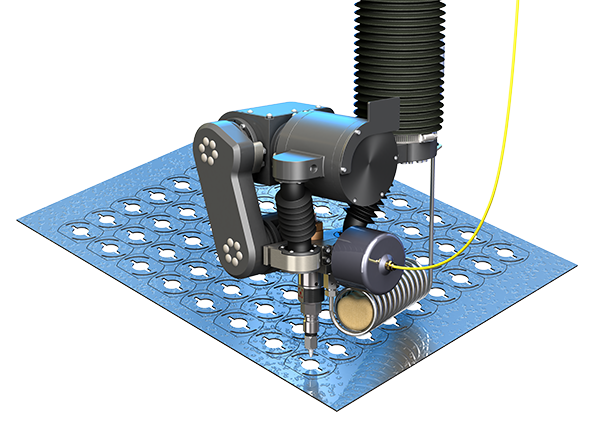

The premise of an inelastic collision is that the objects will stick together after impact, in the case of a ballistic pendulum mechanism where a bullet will penetrate into a pendulum’s body. The measured height of the pendulum’s center of mass after projectile impact can be used to calculate the velocity of the pendulum based on its gravitational potential energy and then its momentum. The ballistic pendulum mechanism includes two separate mechanical systems, the firing mechanism, and the pendulum system. It is based on a dissipative collision where conservation of momentum is conserved, but conservation of energy cannot be invoked due to the conversion of kinetic energy into inaccessible forms such as internal energy. A ballistic pendulum is used to measure a projectile’s momentum, from which it is possible to calculate velocity and kinetic energy. Motion can be applied to the mechanical system through motors, forces, gravity, or preloaded springs. Contact conditions, springs, and dampers can be created to help define the mechanisms of operational movements. SOLIDWORKS Motion uses assembly mates to limit the degrees of freedom of a mechanical system and specify its range of movement. The first step is to set up a motion analysis to simulate the operational movements of a mechanism.

SOLIDWORKS Motion: A Tip for Handling Performance 'Hogs' This guide will make use of a ballistic pendulum mechanism to cover the steps of how to create a design study linked to a motion study. Multiple scenarios can be set up in a single interface to analyze the behavior of a mechanism under various loading conditions.

SOLIDWORKS 2012 introduced the capability of linking motion studies to a SOLIDWORKS Design Study. These outputs include displacements, velocities, accelerations, forces, etc. It allows for simulating the effect of forces, springs, dampers, gravity, component contacts, and bushings to effectively visualize and measure the kinematic and dynamic behavior of a system. , allows for evaluating the mechanical performance of a rigid body mechanism through simulating its operational movements.


 0 kommentar(er)
0 kommentar(er)
